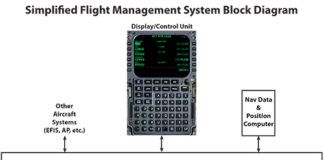Back when I used to teach science classes for elementary school students and their teachers, we used to say that a great question was one that generated an answer plus two more questions. Such it is with the RNAV (GPS) Rwy 33 approach to Easton, Md.
The question was simple: Why would a GPS approach say “RADAR REQUIRED”? It’s GPS, for crying out loud. We can go anywhere without radar vectors, so long as there’s a safe altitude to fly. Who cares if there’s radar?
Approach from … Where?
The reason you need RADAR to fly this approach is that you must be vectored onto the intermediate leg of the approach, because there’s no initial leg, as there is no initial approach fix (IAF). JOVOL is marked “IF,” which stands for “intermediate fix.”
Sure, you could physically fly the approach if you had to. The MSA is 2100 feet within a 25-mile radius of the Runway 33 threshold and crossing altitude at JOVOL is only 2000. There are plenty of fixes in the en route structure (fixes you’d find on an en route chart) within that radius, so you could fly your GPS and connect the dots.
But there’s no published route to do so, and that’s the rub. The only legal, non-emergency route to JOVOL is under ATC’s omnipresent eye. TERPS guidance (FAA Order 8260.19 paragraph 855(g)(2) for those of you following along at home) says, “Where radar is the only method for procedure entry from the en route environment, enter the following: “Chart planview note: RADAR REQUIRED.”
This all begs the question as to why there’s no published route. The plot thickens when you find out that the GPS approach to Runway 15 at Easton also lacks an IAF (and requires radar) but the GPS approaches to Runways 22 and 4 have the expected transitions and IAFs and don’t require radar.
Headless approaches are usually created when the local ATC authority requests it. During development, the ATC facility responsible for the approach weighs in on the design. Our guess is that Potomac Approach didn’t like the proximity to the R-4006 restricted area for the Runway 33 approach or the proximity of the Washington D.C. ADIZ for a Runway 15 approach.
But why that was a show stopper for an IAF is yet another question.




